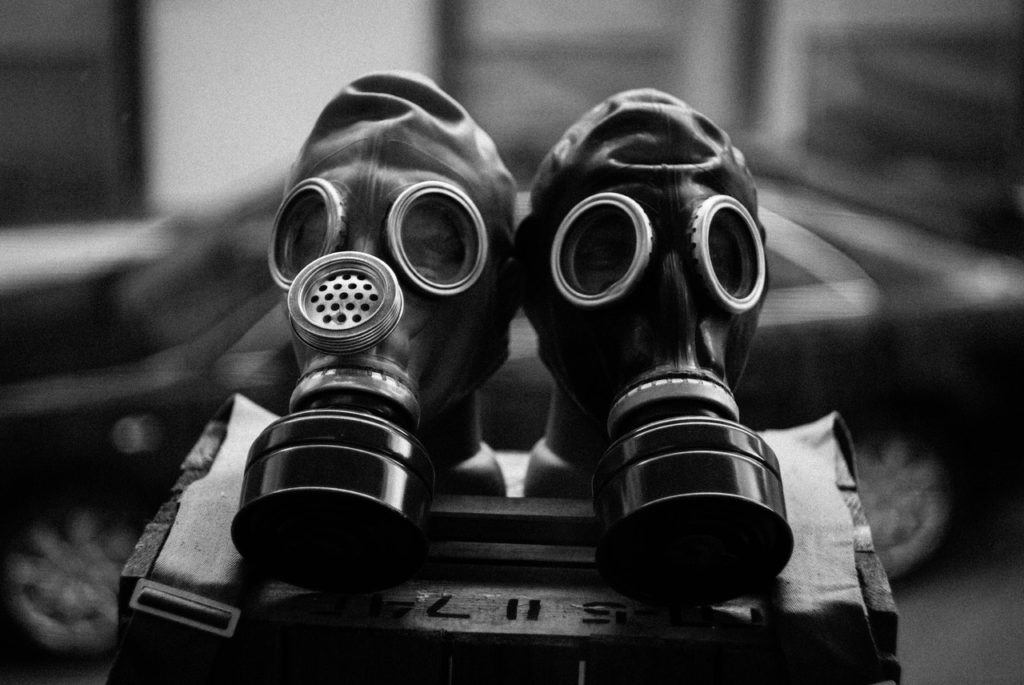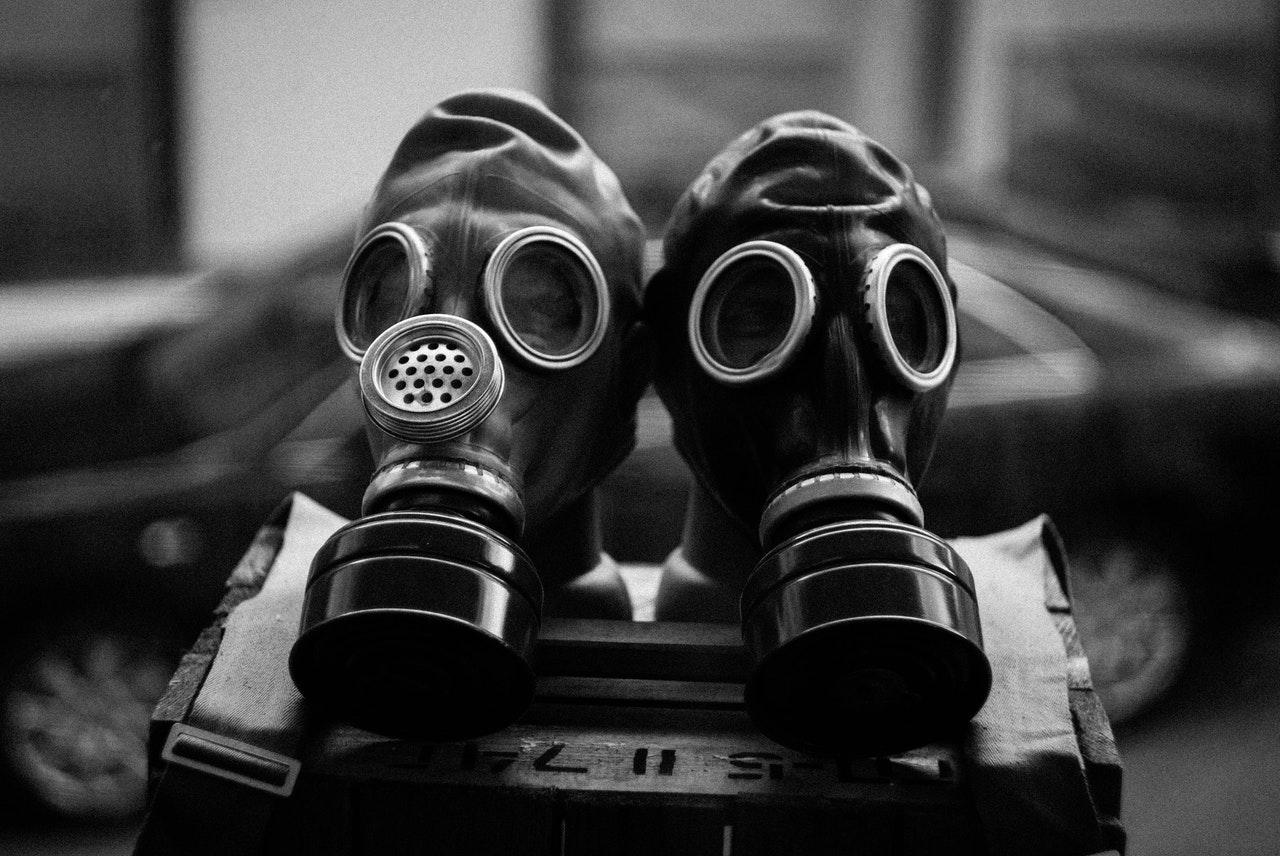
I learned this today. Gas masks work by blocking bacteria and viruses, or by absorbing or altering chemicals.
Gas masks have to be effective against bacterial, viral, and chemical agents. Bacteria and viruses are technically the easiest because all the gas mask has to do is block them. This is done with a filter.
The breathing part of the gas mask basically has a filter in it that traps bacteria and viruses. This obviously has to be changed every now and again because it will get blocked and make breathing difficult. Most gas masks have a filter that has gaps of 0.3 microns. For example, the N95 mask that is being used against the corona virus.
Some people think that the N95 gas mask is not effective against bacteria and viruses because the smallest bacteria is about 200 nm across and the smallest virus is 17 nm across, which is much smaller than 0.3 microns. However, this is not how the filter works. N95 actually means that the gas mask is 100% effective against objects over 0.3 microns and 95% effective against smaller objects. It works in three ways. Firstly, bacteria and viruses don’t just fly through the air on their own. If they did, they could pass through the filter, but they are always attached to water droplets or dust. The filter catches these. Secondly, the particles move with Brownian motion. That means they zigzag rather than travel in a straight line and there is more chance they will be caught by the filter. Thirdly, the filter in the gas mask has a static charge, which attracts the particles. Obviously, gas masks with filters are not 100% effective, but they will stop almost everything.
Gas masks also have to deal with chemicals. In a war, bacterial and viral weapons are available, but gas masks were originally designed to stop chemical attacks. In World War 1, chlorine, bromine, mustard gas, and phosgene gases were used over the trenches. The gas molecules will not be stopped by a filter, so gas masks have to have a second, chemical filter.
There are two ways of stopping chemicals. The first way is to absorb the chemicals. This is usually done with activated charcoal. Activated charcoal is regular charcoal that has had huge amounts of oxygen forced into it, which opens up millions of pores in the charcoal. Because of the holes, it can increase the surface area of the charcoal to 2000 square meters per gram. A lot of chemicals are attracted to the carbon and they naturally get stuck in the pores of the charcoal. Charcoal is good at stopping organic chemicals and chlorine. This is effective, but obviously the charcoal needs to be replaced after a while.
The second way is to stop chemicals that aren’t attracted to carbon, such as sodium and nitrates, for example. These are stopped using chemical reactions. For example, chlorine during World War 1 was stopped by using a reaction with sodium thiosulfate. They react and become sodium hydrogen sulfate, which is an inactive salt and harmless. However, you can only use this method if you know what kind of chemical you are going to be breathing. A lot of industrial gas masks work in this way because that particular industry will probably only use one chemical that could produce a hazardous gas.
Most general gas masks will have a fine mesh particle filter and a layer of activated charcoal in order to give as much protection as possible.
There are also three kinds of gas mask. The regular kind are the ones you breathe through. When you breathe in, you suck the air through the filter, it is purified and you breathe it. The problem with these is that if there is a leak in the mask or it isn’t sealed against your face, dangerous gases can get in. Also, small children might find it hard to breathe through this kind of mask.
The second kind usually has the filter in a separate unit near the chest and a battery turns a fan which sucks air through the filter and up a pipe to your mask. This means that there is always positive pressure in your mask so if it leaks, oxygen leaks out rather than dangerous gases leaking in. The problem with these gas masks is that they are only good as long as the battery lasts and the filters wear out very quickly because air is constantly moving over them.
The third type is a Self Contained Breathing Apparatus (SCBA). These are not so much a gas mask as a self contained tank of clean air to breathe. Firefighters use these because there often isn’t enough oxygen in a fire for them to breathe.
Gas masks have been around in some form or other since the mid 19th century, but the First World War is when they took off. The use of gas on both sides necessitated gas masks. They have evolved a lot since then. Modern gas masks are highly effective, but one problem that must be faced is that even though they can stop things from getting to the lungs, some neural agents work on contact with the skin. A gas mask would not be able to help with that. And this is what I learned today.
Photo by Александр Македонский from Pexels
Sources:
https://www.livescience.com/39217-how-do-gas-masks-work.html
https://en.wikipedia.org/wiki/Gas_mask
https://www.nationalgeographic.com/science/article/130830-gas-masks-syria-israel-chemical-warfare
https://science.howstuffworks.com/gas-mask1.htm
https://www.cdc.gov/niosh/npptl/topics/respirators/factsheets/respfact.html

